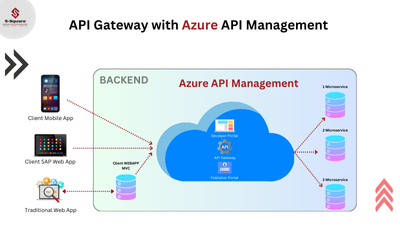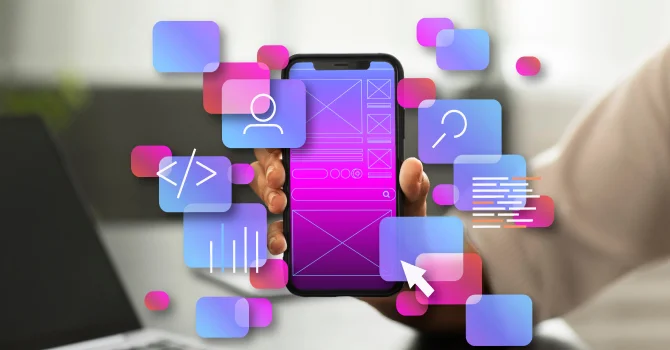Accelerate Innovation with Low Code / No Code Solutions and Services
- S-Square offers the full spectrum of low-code/no-code software development services, enabling enterprises with limited technical expertise to innovate with greater agility, speed, and reduced costs.
- Our team delivers comprehensive and custom solutions geared to help your business scale and meet business goals efficiently.
Services Offered
Expedite Innovation with S-Square Low Code/ No Code Software Services
Enterprises can unlock opportunities to innovate quickly and drive higher value from their software ecosystem by leveraging our versatile, custom low-code/ no code software solutions. Here is a snapshot of our services:
WEM Low Code / No Code (LCNC) Solutions
Accelerate digital transformation with WEM’s Low-Code No-Code platform by building secure, scalable applications faster and cost-effectively without complex coding while empowering teams to innovate, simplify processes, and stay agile
RedSling Enterprise-Grade Application Development Platform
Our exclusive partnership with RedSling’s development platform enables us to build large-scale enterprise applications quickly, and at reduced costs, while driving superior outcomes.
Scale Up Your Business with Low Code/ No Code Software Services
Low Code Development Services
We offer low code development platforms that require limited programming skills, knowledge, and resources. Our services empower developers to build scalable applications faster and efficiently with minimal coding.
No Code Development Solutions
Our no-code tools and services allow business users to build applications using visual interfaces and intuitive drag-and-drop tools. Our platforms streamline and simplify the process, enabling enterprises to build great products without programming expertise.
Custom Low Code/No Code Solutions
We cater to unique business needs across industries with our tailored low code/no code development platforms. Our skill lies in delivering platforms that enable businesses to innovate and scale faster while retaining autonomy over product design and development.
Integration Services
We offer seamless integration of no code/ no code enterprise software with your existing systems, APIs, and third-party platforms. Our interventions help strengthen your software ecosystem without disrupting existing systems and operations.
Powering Agile Solutions with Superior Technology
Our team leverages robust technologies that form the building blocks of our low code/ no code framework.
Low Code Platforms
OutSystems, Mendix, Microsoft Power Apps, Appian —to seamlessly build applications and integrations without writing code.
No Code Tools
Bubble, Glide, Airtable, redSling, WEM —to enable developers to power the full development cycle without large scale programming interventions.
Integration Solutions
APIs, Zapier, Microsoft Power Automate—to strategize and simplify the integration of new applications process with existing software systems.
Our No Code / No Code Software Development Process Drives Results
At S-Square, we follow a systematic process to understand business needs and come up with relevant, cost-effective solutions.
Requirement Analysis
Our first step is to perform a thorough requirements analysis. Our team delves into the process of understanding a client’s business goals, technology challenges and limitations, and user needs.
Platform Selection
Based on the results of the requirement analysis, our next step is to identify the right lowcode/ no code tools that can fit the client’s needs. The best platform must align on aspects such as scalability, functionality, and business fit.
Design & Development
Our team initiates the process of designing and developing solutions that can address key challenges. We use intuitive tools to create prototypes and applications, which are enhanced by real-time feedback from clients.
Testing & Quality Assurance
Our experts now execute various tests to validate application performance, functionality, and security protocols. Our approach ensures that we follow best practices and compliance guidelines and that our quality standards adhere to global standards.
Integration
Our team seamlessly connects low-code/no-code software applications with our client’s existing legacy systems, APIs, and third-party tools. Our integration process is carefully planned to ensure no disruptions to daily operations.
Deployment & Training
We ensure that applications are successfully launched. Our team also provides in-depth training to help boost adoption levels in client teams, enabling them to derive maximum value from any application.
Support & Maintenance
Our team ensures that low code/ no code saas platforms or any other product, stay aligned to evolving business and user needs. We provide continuous updates and improvements to ensure the optimized performance of any new application.
Reap the Full Benefits of Choosing S-Square
S-Square’s low code/ no code services are differentiated by five key factors as follows:
Our Low Code/ No Code Solutions Power Transformation Across Industries
S-Square brings knowledge, skills, and a deep understanding of various industry needs to deliver transformative solutions.
Manufacturing & Distribution
We empower manufacturers and distributors with automated production planning, and supply chain optimization tools to enhance efficiency, reduce downtime, and improve overall operational agility.
How S-Square’s Platform Partnerships Spearhead Business Transformation/ Use Cases
A snapshot of how S-Square’s low code/ no code interventions are benefitting businesses:
Get in Touch with S-Square
Ready to bring your ideas to life? Let’s collaborate to build efficient solutions that empower your business.
Years of Experience
Customized Software
AI Integration in Existing Software
Software Upgradation
Schedule a free Consultation for Full Cycle
Software Development
Competitive Advantages of Embracing Low Code/No Code Development
A snapshot of key advantages Low-Code/ No-code tools and services for enterprises:
Blog Section
FAQ
1. What is the difference between low code and no code?
Low-code platforms do require some programming knowledge. On the other hand, no-code platforms are completely user-friendly for citizen developers with no programming skills and knowledge.
2. Can low code/ no code platforms handle large-scale enterprise requirements?
Advanced low code/ no code support large-scale enterprise requirements; they are designed to unlock capabilities such as scalability, high security, and ease of integration.
3. How secure are low code/ no code tools?
Low code/ no code tools can be secure provided they are well-designed and operated responsibly, keeping security protocols in mind.
4. Can existing systems integrate with low code/ no code applications?
Absolutely. Well-designed low-code/ no-code applications can be securely integrated with existing systems with minimal disruption.
5. What are the limitations of low code/ no code platforms?
Common limitations include customization challenges, problems navigating complex integrations, security risks, a lack of product updates and maintenance, and limits on scalability. Enterprises can address these challenges by partnering with a seasoned low-code/no-code development expert such as S-Square.
Additional Services
Enterprise Application Management
We build cutting-edge enterprise applications for large organizations. Our capabilities span the complete application development lifecycle, from requirement analysis, design, and development to upgradation and maintenance.
Advanced-Data and Analytics
We offer superior predictive analytics, machine learning, and big data solutions that power data-driven decision-making. With in-depth data insights at their fingertips, enterprises can scale faster, optimize operations, and drive revenues.
Managed Services
Our comprehensive IT infrastructure management services drive performance optimization. Our interventions reduce downtime through tailored solutions that address specific business needs.
Application Development
We power innovative app development that transforms businesses, leveraging the power of automated systems and conversational AI. Our products help enterprises boost operational ROI and stay agile in volatile markets.




